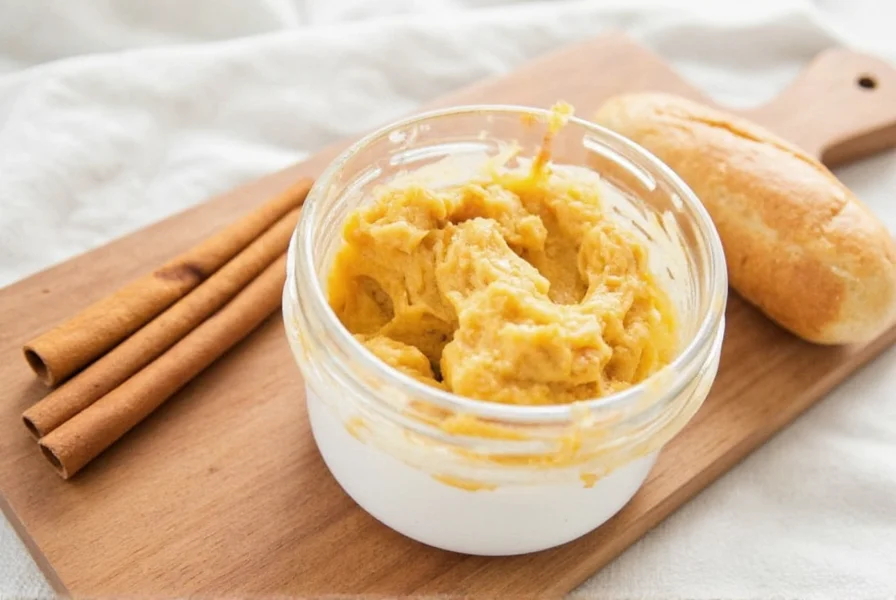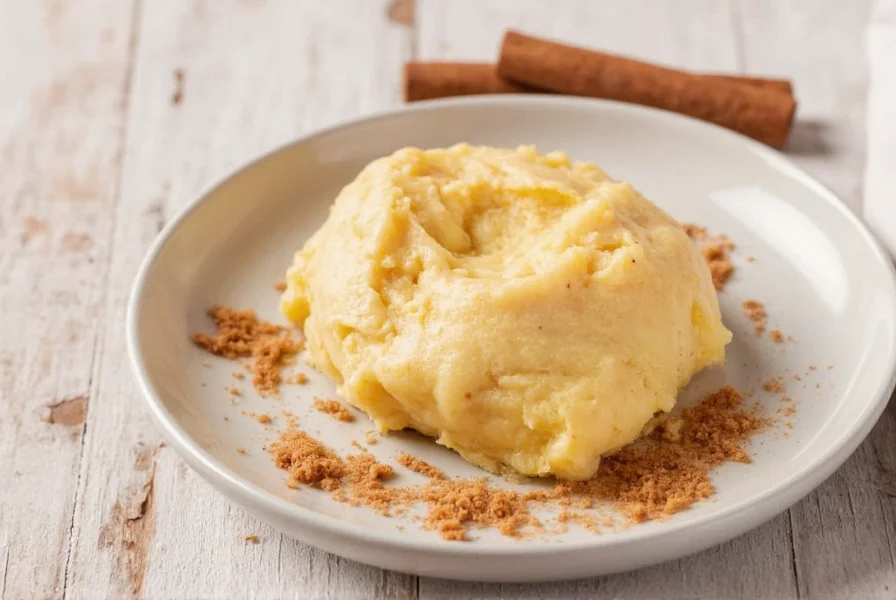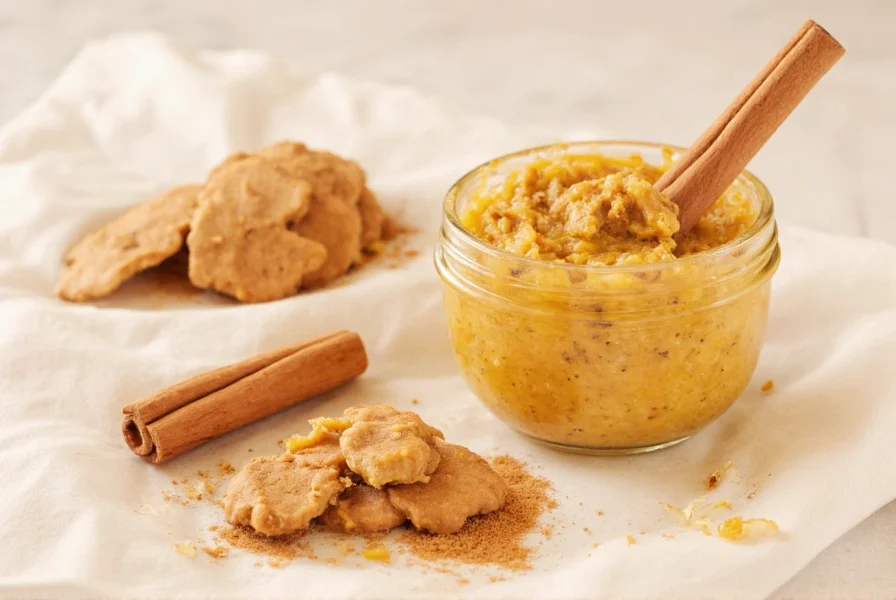Cinnamon butter transforms ordinary baked items into special treats with minimal effort. Unlike plain butter, this spiced variation adds depth and warmth to breakfast foods, desserts, and even savory dishes. The combination of creamy fat and aromatic spice creates a compound butter that melts perfectly over warm surfaces, distributing flavor evenly without overwhelming other ingredients.
Why Cinnamon Butter Deserves a Place in Your Kitchen
This compound butter serves multiple culinary purposes beyond basic spreading. Its balanced flavor profile works exceptionally well with carbohydrate-based foods where the butter can melt into crevices and absorb into porous surfaces. The fat content in butter carries cinnamon's essential oils, releasing aroma and taste more effectively than dry spice alone.
Professional bakers and home cooks alike appreciate cinnamon butter's versatility. It functions as both a finishing touch and integrated ingredient. When incorporated into doughs or batters, it distributes flavor throughout, while as a topping, it creates an immediate sensory experience through aroma and visual appeal of melted butter swirling with cinnamon.
Basic Cinnamon Butter Recipe
Creating homemade cinnamon butter requires only four ingredients and five minutes of preparation time. This foundational recipe yields enough for immediate use or short-term storage.
| Ingredient | Measurement | Notes |
|---|---|---|
| Unsalted butter | 1 cup (2 sticks) | Softened to room temperature |
| Ground cinnamon | 1-2 teaspoons | Freshly ground provides best flavor |
| Powdered sugar | 2 tablespoons | Optional for sweeter applications |
| Vanilla extract | 1/2 teaspoon | Enhances overall flavor complexity |
Step-by-Step Preparation Guide
Follow these straightforward steps to create perfectly textured cinnamon butter:
- Allow butter to reach room temperature (65-70°F) for 30-60 minutes
- In medium bowl, beat butter with electric mixer until smooth and creamy
- Sift together cinnamon and powdered sugar to prevent clumping
- Gradually add spice mixture to butter while mixing on low speed
- Add vanilla extract and continue mixing until fully incorporated
- Transfer to serving dish or shape into log using parchment paper

Creative Applications for Cinnamon Butter
While excellent on toast, cinnamon butter's applications extend far beyond basic spreading. Consider these innovative uses:
- Baking enhancement: Swirl into muffin or quick bread batters before baking
- Pancake perfection: Melt over warm pancakes instead of syrup for sophisticated flavor
- Fruit accompaniment: Pair with sliced apples, pears, or bananas for healthy dessert
- Cookie innovation: Use as filling between two cookies for gourmet treats
- Savory-sweet balance: Complement roasted sweet potatoes or butternut squash
Storage Recommendations for Maximum Freshness
Proper storage maintains cinnamon butter's quality and prevents flavor degradation. When stored correctly, homemade cinnamon butter remains fresh for specific durations:
- Refrigerated: Up to 2 weeks in airtight container
- Room temperature: Maximum 2 days for immediate use
- Freezer: Up to 3 months when properly wrapped
For refrigerator storage, press plastic wrap directly onto the butter's surface before closing the container lid to prevent oxidation. When freezing, shape into log form using parchment paper, then wrap tightly in aluminum foil before placing in freezer bag.
Variations to Elevate Your Cinnamon Butter
Customize your cinnamon butter with these simple modifications that create distinctive flavor profiles:
- Honey cinnamon butter: Substitute honey for powdered sugar (1-2 tablespoons)
- Maple cinnamon variation: Add 1 tablespoon pure maple syrup for autumnal notes
- Spiced version: Incorporate pinch of nutmeg, cloves, or allspice for complexity
- Lemon-zested: Add 1 teaspoon lemon zest for bright counterpoint to warm spices
- Whiskey-infused: Mix in 1 teaspoon whiskey for adult-friendly variation

Common Questions About Cinnamon Butter
Can I use cinnamon butter in place of regular butter in baking recipes?
Yes, but with considerations. Cinnamon butter works well in recipes where cinnamon complements other flavors, such as muffins, quick breads, or coffee cakes. When substituting, maintain the same fat content but reduce additional sugar and spices in the recipe to balance flavors. Avoid using in recipes where pure butter flavor is essential, like shortbread or pie crusts.
How can I prevent my cinnamon butter from becoming grainy?
Graininess typically occurs when ingredients aren't properly incorporated. Ensure your butter is softened but not melted (65-70°F), sift dry ingredients to eliminate clumps, and mix on low speed until just combined. Overmixing can also cause separation, so stop once ingredients are fully incorporated. Using powdered rather than granulated sugar helps maintain smooth texture.
What's the difference between cinnamon butter and cinnamon sugar?
Cinnamon butter combines fat and spice, creating a spreadable compound that melts and distributes flavor through fat molecules. Cinnamon sugar is a dry mixture that sits on surfaces and provides immediate sweetness with less flavor integration. Butter carries cinnamon's essential oils more effectively, releasing aroma and taste gradually as it melts, while sugar provides instant but less complex flavor delivery.
Can I make cinnamon butter without added sugar?
Absolutely. Many traditional cinnamon butter recipes contain no added sweeteners. Simply omit sugar and increase cinnamon slightly to compensate for reduced flavor complexity. This version works particularly well with savory applications like roasted vegetables or as a finishing touch for grilled meats where sweetness would be undesirable.











 浙公网安备
33010002000092号
浙公网安备
33010002000092号 浙B2-20120091-4
浙B2-20120091-4